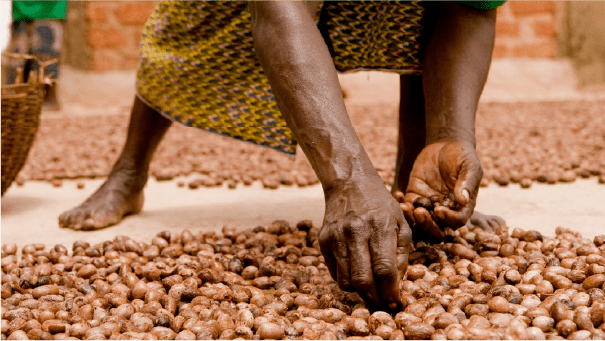With both customers and investors becoming more conscious about the environment, the demand for...
Blockchain-backed data – what is it and how does it help me make stronger claims?
Blockchain has certainly had quite the journey: from the early crypto days to full-blown media hype, now arriving (more or less) in the digital mainstream. There are different types of blockchain technologies (e.g., Bitcoin, Ethereum, Hyperledger Fabric) out there and their applications vary: from financial services, art to supply chains – there are many different ecosystems forming and it certainly remains a very dynamic landscape.
Blockchain has always been important to farmer connect, as it naturally lends itself to supply chain traceability due to the following aspects:
- Auditable transaction history (through cryptographic signatures and immutability of the ledger)
- Network collaboration (via distributed ledger and network consensus)
These aspects are also important when it comes to farmer connect’s vision to increase trust in complex supply chains, creating what we call blockchain-backed data – but what do we mean by blockchain-backed data and what are the benefits of creating it?
How farmer connect uses blockchain technology and what is blockchain-backed data?
Blockchain has certainly always been at the heart of the farmer connect technology stack, but the longer we have worked with it, the more awareness, and insights we gained about its strengths and limitations. At farmer connect, our strategy has generally evolved to employing the different technologies very pragmatically – meaning, we don’t use technology for the sake of technology, but instead try to start with a problem, to which a certain piece of technology can help provide a solution. Blockchain is no different in that regard.
One might be tempted to use blockchain as extensively as possible in a platform providing supply chain traceability. There are however some drawbacks for distributed systems which must be kept in mind – limitations in the areas of real-time and computation-heavy queries that can make it difficult to deal with certain use cases. On top of that, just as with any database, not everything has to and/or can be shared via blockchain. Not all information is useful for other network participants and will only put unnecessary strain on the network. Furthermore, not everything can be shared via blockchain due to limitations from existing regulation, e.g., GDPR limits how personal information can be shared via blockchain.
We therefore needed to understand and clearly categorize which information will be stored on the blockchain, both to remain compliant and to understand what adds value to clients and their ecosystem partners. On the farmer connect platform, data stored on a blockchain is primarily enterprise traceability data. Concretely, these are data points which include company identifiers, product identifiers and supply chain specific event data. This information is then uploaded to the blockchain, creating what farmer connect calls “blockchain-backed” data.
Once the data is on the blockchain, a smart contract correctly determines visibility to information, connecting the relevant identifiers across the different organizations to form a (product) trace. This “connected” data can be particularly useful when making sustainability claims in the context of global supply chains – to date, many claims were difficult to back due to the fragmented nature of the supply chains (and the corresponding data silos).
How does blockchain data help with making more reliable sustainability claims?
When connecting data across these different systems, being able to trust that the algorithm of the smart contract links the data points correctly, with the corresponding visibility, is key to strengthening the corresponding claim. But trust in the algorithm is one thing – the other is the actual data itself.
Let’s start with a question: is blockchain-backed data automatically “better” or “more sustainable”? The answer to this question is most likely no – just because data is saved on a blockchain doesn’t make it more correct, the data is what it is. Differently put, putting data on a blockchain doesn’t automatically increase its veracity. Nevertheless, working with blockchain-backed data can make data more trustworthy if we recall the two key properties of blockchains.
Network participants uploading data to a blockchain know that once the data is saved on a blockchain, it can essentially only be updated by adding an additional transaction, but the blockchain will always keep a copy of the original transaction (i.e., due to the immutability of the ledger). This clearly incentivizes participants to upload data of higher quality and veracity, as there is a (natural) audit trail, which can reveal discrepancies with the data easily, and patterns in incorrect data upload could even lead to sanctions from the network.
Furthermore, working with a shared ledger means that different actors in the ecosystem will work on one version of the truth and gain (permissioned) access to the shared data. When multiple participants work with the same data, the information will certainly face higher scrutiny and get checked from multiple angles, again strengthening the quality & trust in the data – one of the great benefits of ecosystem collaboration!
Written by: Fabian Portmann, CTO farmer connect


